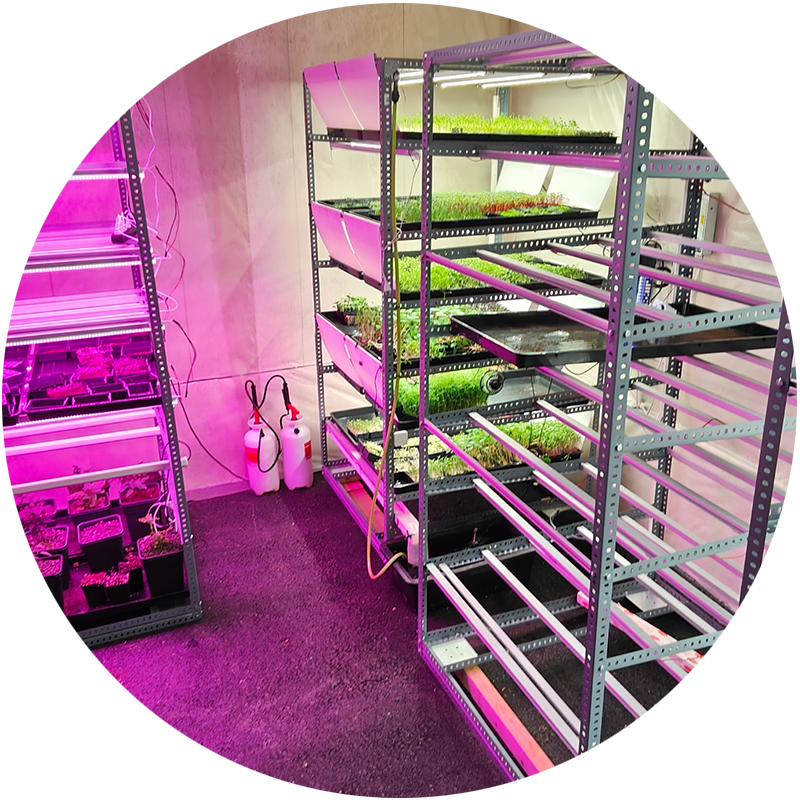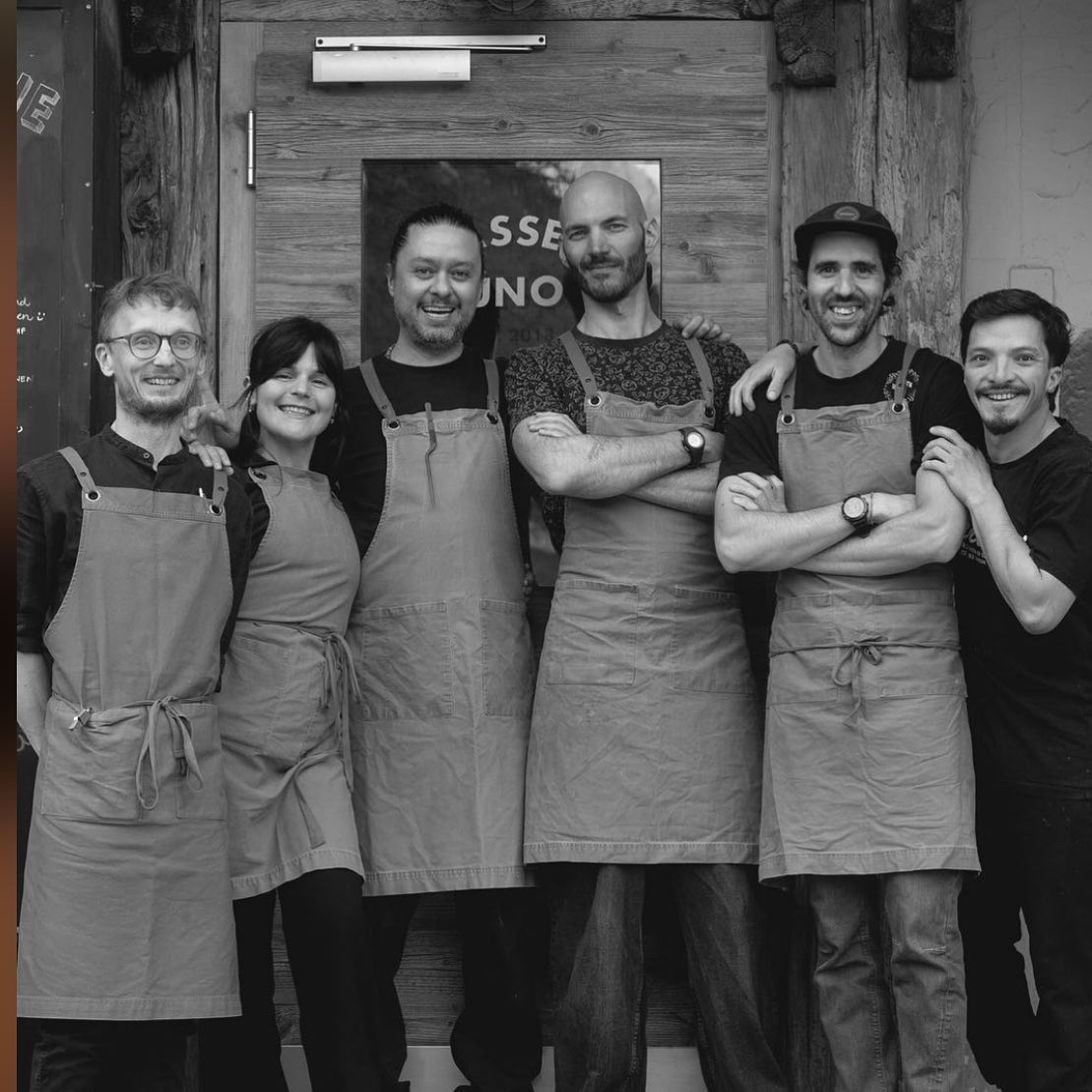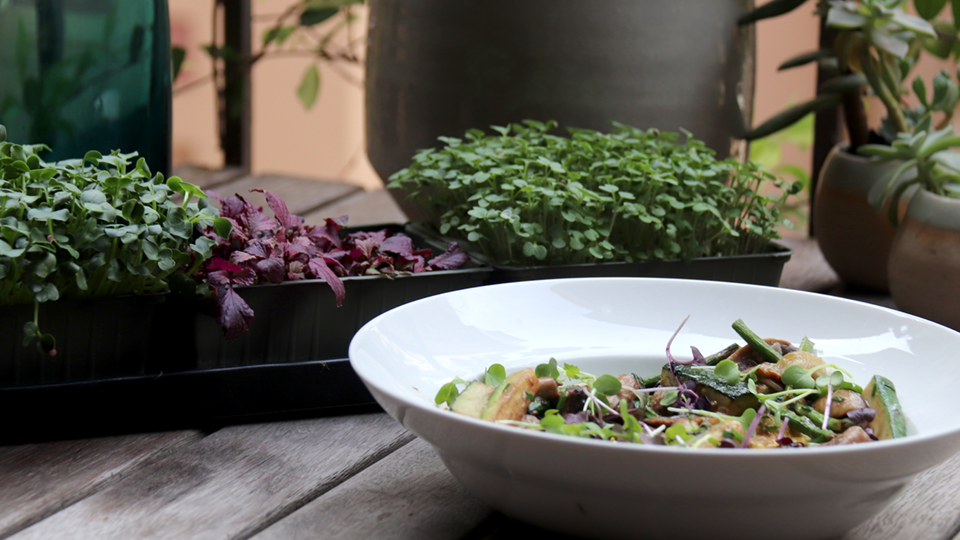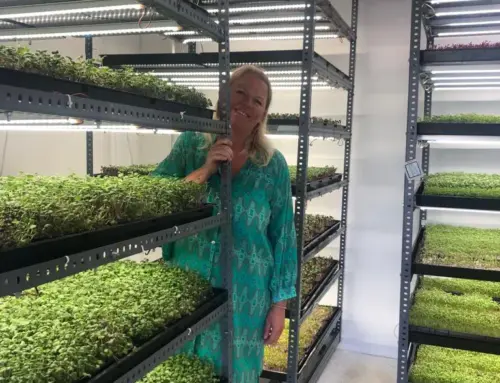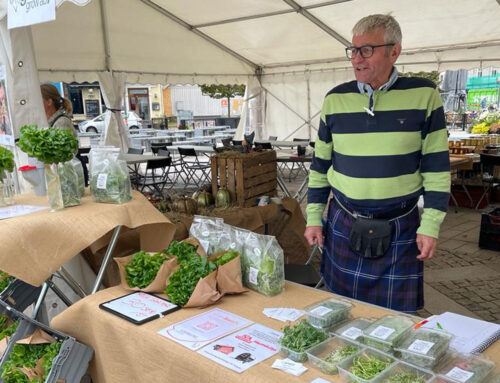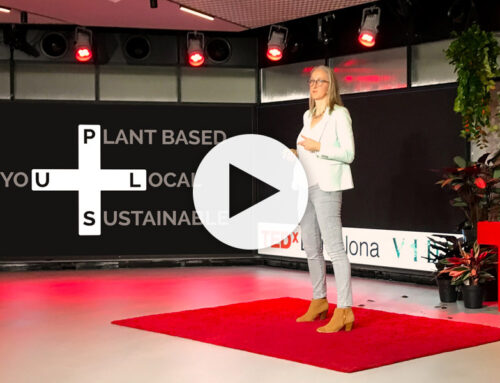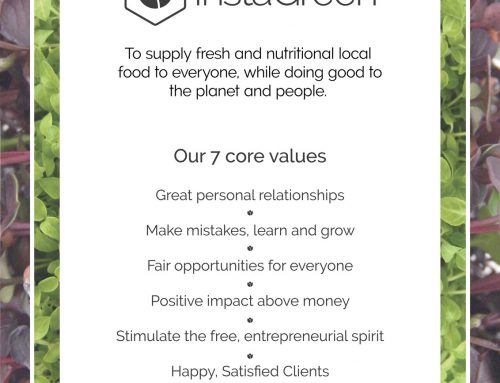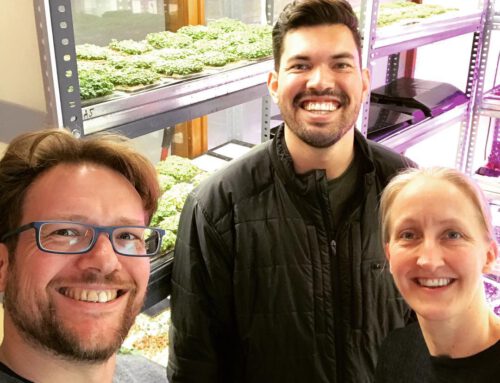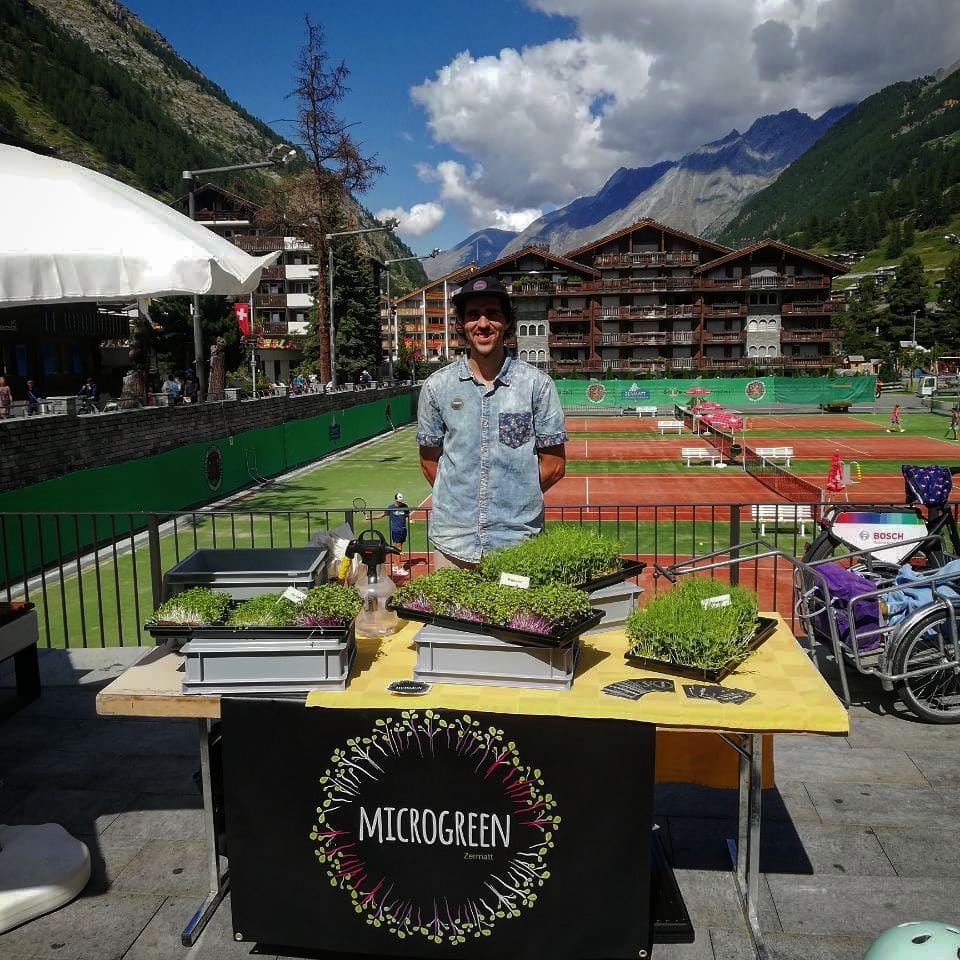
Farmer in the Alps brings InstaGreen to new heights.
Expert from farm to kitchen.
“Staff will ask me if I know where to find a new cook or request my ice cream recipe,” Juan says. Certainly, this is a group that appreciates unique ingredients, and they are eager to learn about Juan’s agricultural experiments. Juan will happily report on his progress towards harvesting more dessert greens. Grown in complete darkness, corn was truly transformed into a micro sweet treat in just 5 days. The gregarious Juan says the favorite part of his job is convening with the kitchen staff, but he rarely lingers too long. He’s just a blur on the streets of Zermatt as he bounds from farm, to delivery route, to home for a quick change before his dinner shift. When we boast of farm-to-table restaurants, we seldom picture a chef plating a dish with produce he or she has grown.
A seed planted in Guatemala.
Juan named his microgreen business, Mayan Green in homage to Guatemala, the Central American country where he grew up. Early on, Juan knew he was destined to be a cook. By age six, he was spending hours helping his Swiss-born mother in her bakery, eagerly taking on small tasks like peeling bananas for bread. “I discovered the pleasure of doing things with my hands and loved how food could bring out so many positive emotions in customers.”
Juan spent summers in the Guatemalan countryside where his father owned a ranch with cows, horses, and orchards. Juan was in awe of the way plants evolved, particularly trees. Given the opportunity to plant his own mango or avocado tree he chose an Araucaria, a hardy evergreen. There would be nothing to harvest, but he chose the tree just for the wonder of watching its limbs stretch towards the sky. Years later, the enormous tree was planted in a city park and the joy of nurturing a living thing stayed Juan’s his heart.
New opportunities to explore.
Juan was 24 when he left the tropics of Guatemala to travel to a place of ice and snow in the Alps. His cousins invited him to visit them in Zermatt in the hopes that the magic of the storied skiers’ paradise would restore his usually buoyancy. Juan remembers that he didn’t have the right clothes. “I had never been so cold in my whole life, but I was so happy.” Juan was enchanted by the upbeat, friendly vibe of a village overflowing with happy vacationers crunching through snow on peaceful, carless streets. A multitude of top-quality restaurants catered to well-heeled patrons hungry after a day on the slopes. Juan knew he needed to stay and launch his culinary career alongside talented chefs from around the world.
Professional kitchens are known for their high pressure, intense work environments and it takes time and grit to rise through the ranks of a rigid hierarchy. After several years, Juan was given the opportunity to become a chef at Walliserkanne. He often needed to direct his team of 22 in four or five different languages. Never comfortable with the strict pecking order of traditional kitchens, Juan was always open to anyone’s ideas, regardless of station. “If the dishwasher said his grandma had a good recipe we should try, I’d listen to him.” Juan explains.
What if I do it?
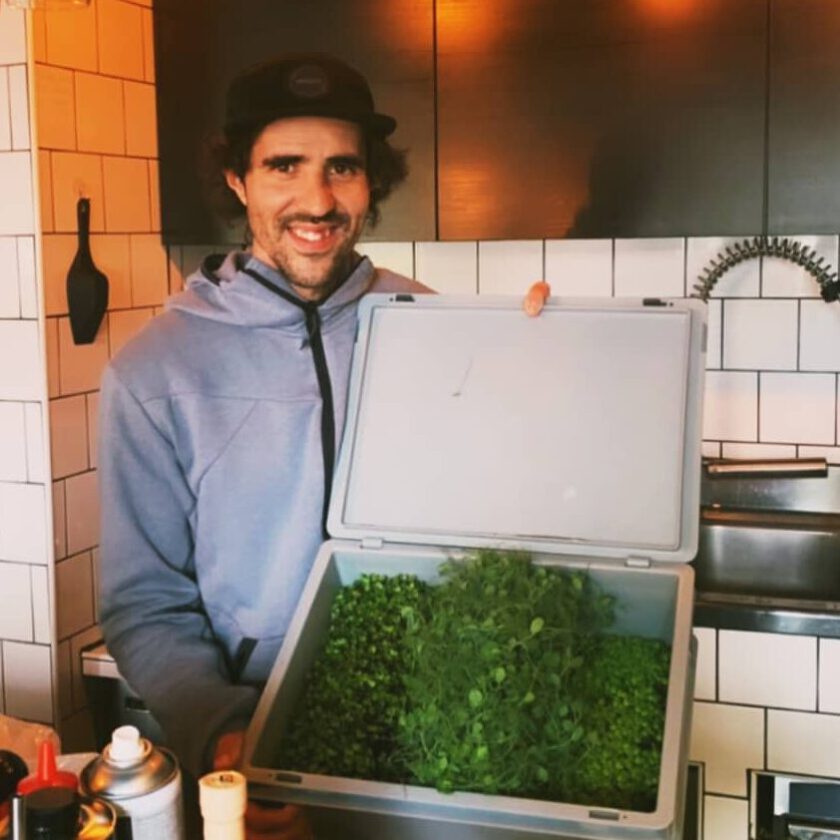
The microgreen challenge hung in the ether for a year and a half until COVID lockdowns in April 2020 shut down the restaurant business. A passionate mountain biker, Juan used the time initially to devote to the sport. But he soon became restless. Juan started diving into books about growing microgreens and binged on online tutorials. The local supermarket provided some supplies like lentils, coconut coir and cooking tins to get him started. But the pale sun streaming through his kitchen windows was not strong enough to grown the greens. Juan found a growing kit which he ordered online. Then the owner of his shuttered restaurant offered abandoned space in the storage area for him to set up the compact, vertical farm.
As workers gradually trickled back into work the sight of colorful greens aligned in rectangular trays like a living quilt was a curious attraction. Juan was patient with their questions, but he wanted a quiet place out of the public eye to perfect his growing methods.
The secret of a sealed envelope.
He moved the plants to his basement and in time he was serving his family microgreens on sushi or tossing coriander greens for a zesty salad. “It’s not so easy just to put down seeds,” Juan says of his early struggles to get the microgreens to thrive. “But I kept learning.” In time he was proud enough to snap a photo and share it with friend and fellow chef, Luis Roma.Juan was caught off guard when Luis asked to buy some of his microgreens for an event he was having. Juan protested, explaining that he wasn’t running a business. “I don’t even know what price to charge.” But the chef, who had an eye for quality, wouldn’t back down. Juan gave in and made a gift of all the microgreens ready for harvest. After the event, the chef pressed an envelope of money in Juan’s hand which Juan keeps sealed as a memento. Chef Luis unwittingly had become the godfather of Mayan Green.
Overcoming hurdles.
Juan set out to find a new space to farm. Labor costs in the resort are high, so he would build the indoor farm himself with the help of a dishwasher friend who worked in construction. Life was a whirlwind of activity as he ran from home to restaurant, to construction site, meticulously arranging the components for a vertical farm and ensuring proper insulation in the walls and floor. Word spread about the flavorful, gorgeous microgreens that would outlast the abroad competition by two weeks. Says Juan, “Chefs are competitive, and they want to be better than the next person.” He swiftly secured five new customers and then, whoosh, 75 liters of water flooded the indoor farm. He thought about abandoning the fledgling business, but the chefs already had developed an insatiable appetite for his product and urged him to get up and running again.
Juan urgently needed to replace his faulty growing system which was problematic from the beginning. Luckily, he found Instagreen and was introduced to a system so simple and reliable it wouldn’t keep him up at night worrying about floods. Maintenance required a minimum of effort and this was good news for someone so stretched for time.
Working like a Swiss clock.
These days the indoor farm is in a bigger garage and has the capacity to fill 300 boxes a week. There is office space where his wife Stefanie does the accounting. Mayan Green had gotten some publicity from a gourmet magazine but Juan says the most fruitful marketing tactic is to hand out microgreens to chefs who are delighted to play with the tastes, colors and textures. But Juan says sometimes he must win the confidence of chefs who wonder if they can rely on a steady supply of greens from a business that’s a one man show run by someone with two jobs. Juan doesn’t disappoint, keeping a rigorous planting schedule to ensure that each chefs’ preferred microgreens are ready on specified delivery days.
It takes planning and a good deal of stamina, but Juan is disciplined in how he divides his time between farm, restaurant, and his highest priority – family. He is a regular presence at family breakfasts, often serving omelets garnished with onion microgreens to his daughters, now three and four years old. His eldest daughter, he says, is as captivated with the greens as the chefs in town. “She is always asking me questions. Why are the leaves different shapes? What gives them color?” Microgreens seem to have an allure people can’t turn away from.
Committed to healthy, local food and proper stewardship of resources.
Microgreens were selling so well and Juan decided he could afford to stop cooking for a while. But that was short-lived. His friend Luis lured him back to work a reduced schedule at his celebrated restaurant Brasserie Uno, which boasts a Michelin star. Juan admits that being in the kitchen is like an addiction. He loves the adrenaline rush among the chaos and din of creative people practicing their craft. The restaurant also has a Michelin green star in recognition of its notable sustainability practices. Mayan Green products are another expression of the restaurant’s commitment to healthy, local food and proper stewardship of resources.
Mayan Green currently has 35 restaurant customers, but Juan would like that number to grow to 500. He is already considering investing in more growing space and trucks so every alpine village within 100 kilometers can enjoy health-giving, delicious greens. Juan is proud that he once summitted the Matterhorn. Now he is quite confident that he can take Mayan Green to new heights and do so with his boundless determination and radiant, positive energy.
It will be a joy to watch his assent.
Download InstaGreen_Greetings_From_Swiss_Alps.pdf
Article by Mary D’Apice
